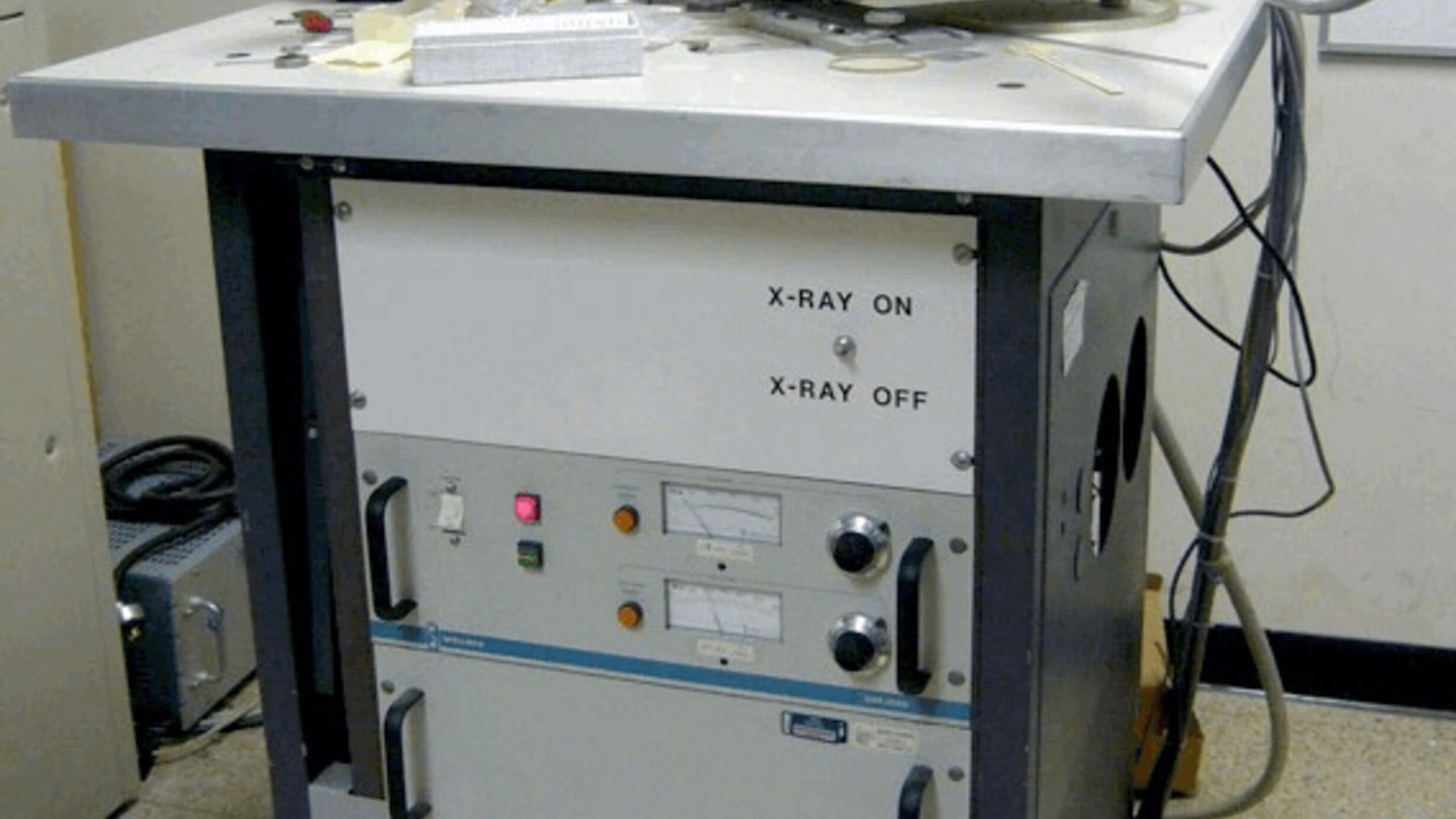X-Ray Diffraction Laboratory

The department for 43 years housed a laboratory for study of minerals and crystalline substances using X-ray diffraction (XRD) techniques. Because the wavelengths of X-rays are similar to the spacing of atoms in crystals, X-rays are scattered by crystals in much the same way that a diffraction grating scatters light. Discrete angles and intensities of scattering correlate with the geometric pattern of atoms within a crystal. Examination of the pattern and intensities of scattering from a sample are used to interpret its crystal structure and to identify the mineral or crystalline compound constituting the sample.
X-ray diffraction facilities are critical to identify minerals in specimens within the collections and crystalline substances in experimental syntheses from other laboratories. For example, if a researcher requests a sample of a particular mineral, we would verify that the sample is, indeed, what the label says it is, using XRD, prior to sending a piece to the requester. In addition, such facilities can be used by the conservation lab and other departments to identify such things as pigments in paints, degradation products on artifacts, and minerals in fossils; anything crystalline. A basic but very very old facility for this a Philips PW-1710 automated powder (Bragg-Brentano) diffractometer attached to a 2000 watt Cu X-ray source (photo above) and controlled by a PC. This machine is no longer functioning.
A Rigaku DMAX-Rapid Microdiffraction system was acquired as a shared facility with Earth & Environmental Sciences Dept. at Columbia University, Research Conservation Dept. at the Metropolitan Museum of Art and AMNH with NSF funding in 2004. This instrument is inoperable as of 2019 due to malfunction of an irreplaceable electronic circuit. It was able to perform microdiffraction on very small samples (~100 microns) or on surfaces of small objects (to several cms), as well as make single crystal diffraction measurements. It was used routinely to assist in mineral identification of specimens in the mineral collection, mineral components of rocks being studied as part of research projects, phase identification and cell parameters from high-pressure multianvil experiments, and study of pigments, coatings, and alterations on art and archaeological objects. Currently, the Department is seeking funding (c. $350K) for replacing this critical piece of infrastructure that is basic to maintenance of any major mineral collection that needs to know the species in the collection to be able to loan them to others for research.
Diffraction instruments are used under the direction of Curator Emeritus George Harlow.